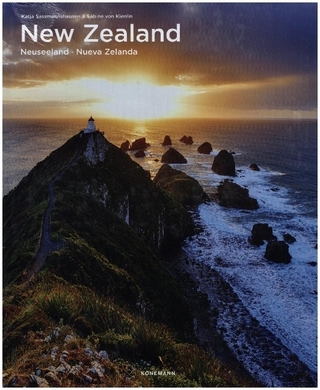
Easter Island
Seiten
2002
Firefly Books Ltd (Verlag)
978-1-55297-621-0 (ISBN)
Firefly Books Ltd (Verlag)
978-1-55297-621-0 (ISBN)
- Titel ist leider vergriffen;
keine Neuauflage - Artikel merken
An illustrated history of Easter Island including its art, culture, environment and people.
Surrounded by the immense expanse of the Pacific Ocean, over 2,000 miles from the nearest inhabited land, tiny Easter Island with an area of only 46 square miles is incredibly isolated.
Easter Island is most famous for the giant statues that have fascinated the world since the island's discovery by European explorers in the early eighteenth century. How did a small, isolated society with limited resources create these magnificent monuments? How were these statues, some weighing 200 tons, transported for miles across the island? And, more mysteriously, what role did they play in the religion and social order of the people who created them?
These and many other questions surrounding Easter Island are addressed in Carlos Mordo's new book. The author reveals that this island on the outermost edge of Polynesia hosted a rich culture where shamans and priests, and a mystical belief in ancestor gods, directed the life and death of the islanders, who thrived, created these statues of startling originality, then disappeared.
Easter Island also examines the island's unique environment and ultimately how its degradation, and contact with Europeans in the eighteenth century, had profound consequences for the island's people.
Illustrated with over 150 color photographs, Easter Island is a fascinating exploration of the history and living culture of this remarkable island.
Surrounded by the immense expanse of the Pacific Ocean, over 2,000 miles from the nearest inhabited land, tiny Easter Island with an area of only 46 square miles is incredibly isolated.
Easter Island is most famous for the giant statues that have fascinated the world since the island's discovery by European explorers in the early eighteenth century. How did a small, isolated society with limited resources create these magnificent monuments? How were these statues, some weighing 200 tons, transported for miles across the island? And, more mysteriously, what role did they play in the religion and social order of the people who created them?
These and many other questions surrounding Easter Island are addressed in Carlos Mordo's new book. The author reveals that this island on the outermost edge of Polynesia hosted a rich culture where shamans and priests, and a mystical belief in ancestor gods, directed the life and death of the islanders, who thrived, created these statues of startling originality, then disappeared.
Easter Island also examines the island's unique environment and ultimately how its degradation, and contact with Europeans in the eighteenth century, had profound consequences for the island's people.
Illustrated with over 150 color photographs, Easter Island is a fascinating exploration of the history and living culture of this remarkable island.
Carlos Mordo, an anthropologist and researcher who has traveled extensively, studying throughout Latin America and Europe, is the author of numerous books. His photographs have been published around the world in over twenty books.
| Erscheint lt. Verlag | 29.9.2002 |
|---|---|
| Zusatzinfo | 150 colour photographs, maps |
| Verlagsort | Ontario |
| Sprache | englisch |
| Maße | 229 x 305 mm |
| Themenwelt | Reisen ► Bildbände ► Australien / Neuseeland / Ozeanien |
| ISBN-10 | 1-55297-621-1 / 1552976211 |
| ISBN-13 | 978-1-55297-621-0 / 9781552976210 |
| Zustand | Neuware |
| Haben Sie eine Frage zum Produkt? |
Mehr entdecken
aus dem Bereich
aus dem Bereich
ungezähmte Wildnis am Ende der Welt
Buch | Hardcover (2023)
Tecklenborg (Verlag)
CHF 49,90

